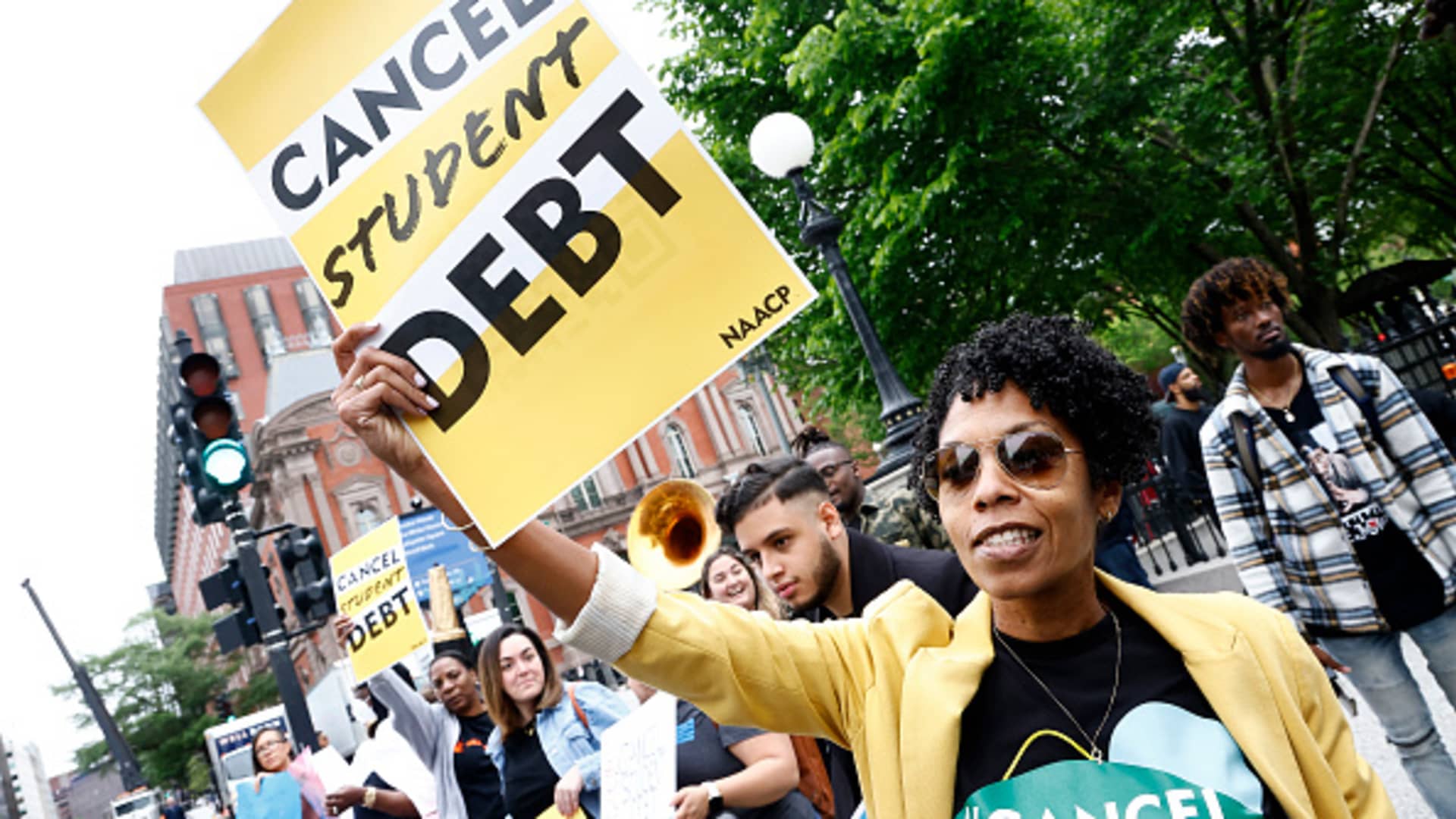Products You May Like
Student loan default rates could dramatically spike if the Biden administration’s loan forgiveness plan is blocked, a top official at the U.S. Department of Education said in a new court filing.
The warning came as the Department of Justice asked a federal judge in Texas to stay an order that has temporarily blocked the Biden administration’s debt relief program.
“Unless the [Education] Department is allowed to provide debt relief, we anticipate there could be an historically large increase in the amount of federal student loan delinquency and defaults as a result of the COVID-19 pandemic,” Education Department Undersecretary James Kvaal said in the filing.
The Biden administration stopped accepting applications for its student loan forgiveness plan last week after Judge Mark Pittman of the U.S. District Court for the Northern District of Texas called the policy “unconstitutional” and struck it down.
Meanwhile, six GOP-led states argued in another lawsuit that the president’s loan relief program threatened their future tax revenues and circumvented congressional authority. Their challenge had been rejected by a federal judge, but then the states appealed and the 8th Circuit Court of Appeals in St. Louis issued a nationwide injunction temporarily barring the Biden administration from moving forward with its plan.
Student loans plagued with problems before Covid
Even before the pandemic, when the U.S. economy was enjoying one of its healthiest periods in history, problems plagued the federal student loan system.
Only about half of borrowers were in repayment in 2019, according to an estimate by higher education expert Mark Kantrowitz. About 25% — or more than 10 million people — were in delinquency or default, and the rest had applied for temporary relief for struggling borrowers, including deferments or forbearances.
These grim figures led to comparisons to the 2008 mortgage crisis.
Federal student loan payments have been on pause since March 2020, when the coronavirus pandemic first hit the U.S. and crippled the economy. Resuming the bills for more than 40 million Americans will be a massive task, and the Biden administration had hoped to ease the transition by forgiving a large share of student debt first.
However, since President Joe Biden announced his plan in August to cancel up to $20,000 for tens of millions of borrowers, conservative groups and Republican states moved quickly to try to block it.
Despite offering student loan borrowers forbearances during previous natural disasters, default rates still skyrocketed, Kvaal said in the filing.
“[T]he one-time student loan debt relief program was intended to avoid” that problem, he added.
18 million borrowers most at risk for default
The borrowers most in jeopardy of defaulting are those for whom Biden’s student loan forgiveness plan would have wiped out their balance entirely, Kvaal said. The administration estimated its policy would do so for around 18 million people.
“These student loan borrowers had the reasonable expectation and belief that they would not have to make additional payments on their federal student loans,” Kvaal said. “This belief may well stop them from making payments even if the Department is prevented from effectuating debt relief.”
“Unless the Department is allowed to provide one-time student loan debt relief,” he went on, “we expect this group of borrowers to have higher loan default rates due to the ongoing confusion about what they owe.”
